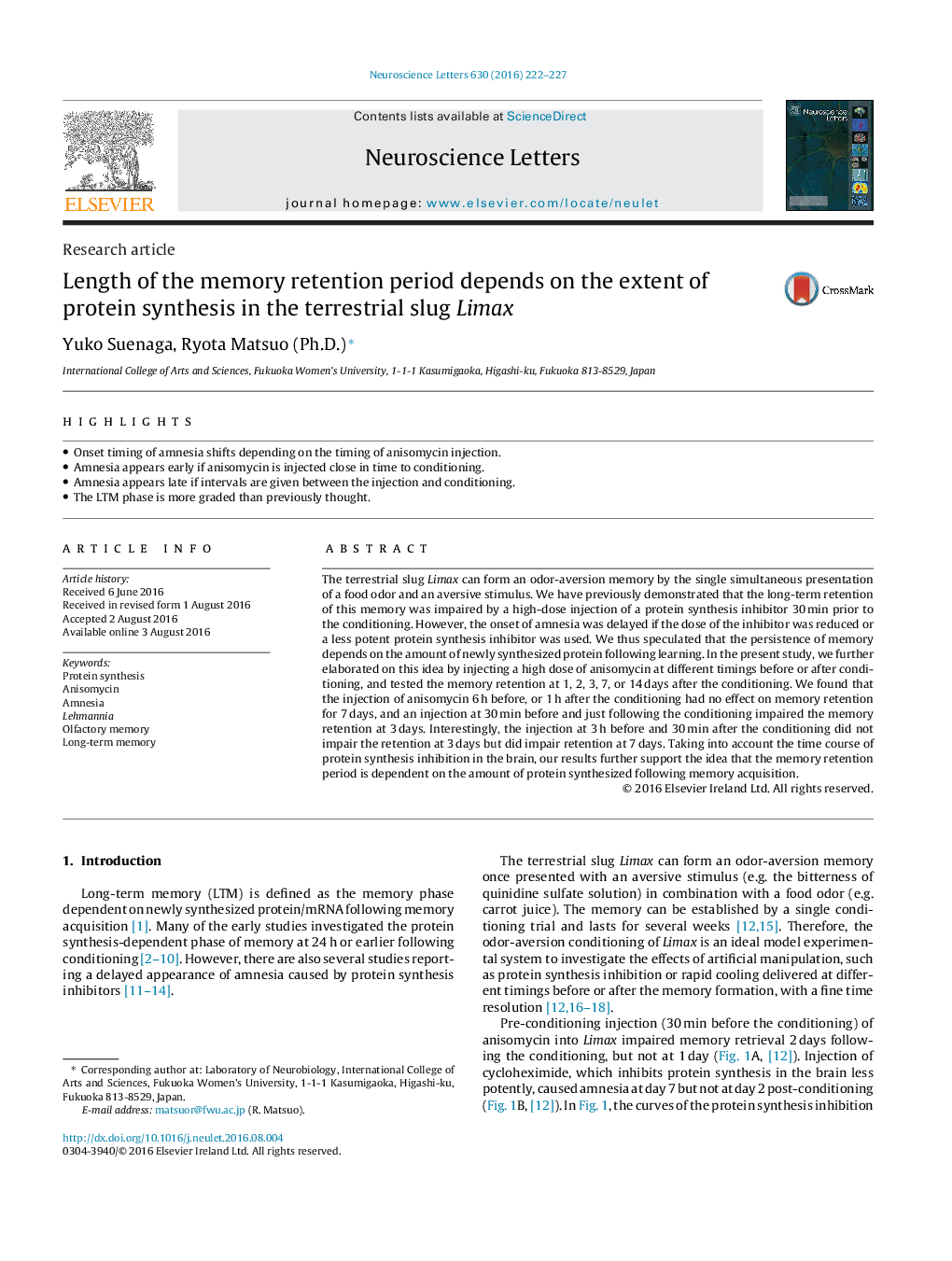| Article ID | Journal | Published Year | Pages | File Type |
|---|---|---|---|---|
| 6279212 | Neuroscience Letters | 2016 | 6 Pages |
Abstract
The terrestrial slug Limax can form an odor-aversion memory by the single simultaneous presentation of a food odor and an aversive stimulus. We have previously demonstrated that the long-term retention of this memory was impaired by a high-dose injection of a protein synthesis inhibitor 30Â min prior to the conditioning. However, the onset of amnesia was delayed if the dose of the inhibitor was reduced or a less potent protein synthesis inhibitor was used. We thus speculated that the persistence of memory depends on the amount of newly synthesized protein following learning. In the present study, we further elaborated on this idea by injecting a high dose of anisomycin at different timings before or after conditioning, and tested the memory retention at 1, 2, 3, 7, or 14Â days after the conditioning. We found that the injection of anisomycin 6Â h before, or 1Â h after the conditioning had no effect on memory retention for 7Â days, and an injection at 30Â min before and just following the conditioning impaired the memory retention at 3Â days. Interestingly, the injection at 3Â h before and 30Â min after the conditioning did not impair the retention at 3Â days but did impair retention at 7Â days. Taking into account the time course of protein synthesis inhibition in the brain, our results further support the idea that the memory retention period is dependent on the amount of protein synthesized following memory acquisition.
Related Topics
Life Sciences
Neuroscience
Neuroscience (General)
Authors
Yuko Suenaga, Ryota Ph.D.,
